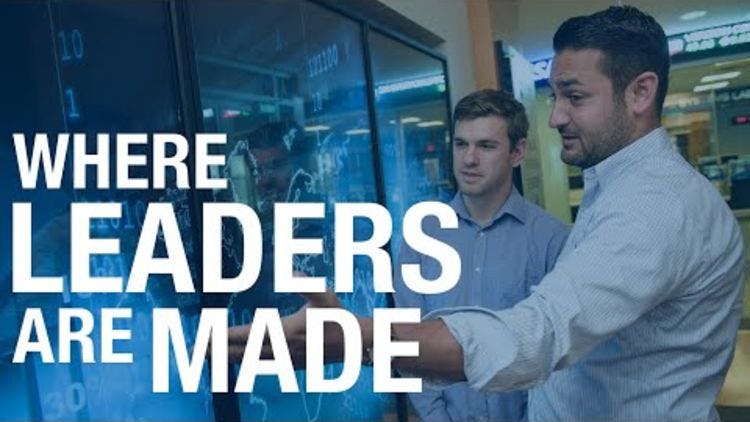What Makes a Company a Great Place to Work? Researchers Find Valuable Advice
Stevens Faculty Turn to Fortune Rankings in Seeking Corporate Values that Drive Good Culture
With the economic devastation wrought by COVID-19, you could forgive businesses for focusing on more pressing matters than their corporate values.
But that might be a mistake, according to new research out from the School of Business at Stevens Institute of Technology. As businesses work to rehire or reskill while reconnecting with customers, there’s an opportunity to lay a foundation to guide future growth while better developing talent.
“The things we say we value — who we are, what’s at our core — those are things we can turn to when we’re faced with challenges,” said Dr. Peter Dominick, a teaching professor at Stevens and director of the school’s technical leadership executive education programs. “Values are about influencing, about resilience. They’re a source of inspiration for us and a basis for unity.”
And if you’re looking for help in reframing your values — or perhaps just better articulating them — what better place to look for inspiration than Fortune’s 100 Best Companies to Work For? That’s where Dr. Dominick, along with co-authors Dr. Gregory Prastacos, dean of the School of Business; emeritus professor Dr. Richard Reilly; and Dr. Dimitra Iordanoglou, found a ready list of firms held in high regard by their employees.
How values create great workplaces
“We wanted to explore how these well-regarded companies describe their values and how they contribute to them being great places to work,” Dr. Dominick said.
The team examined the 62 companies that appeared on the list annually between 2014 and 2018. In addition to examining the values of those companies, and distilling them into a broad framework, the authors interviewed leaders at nine of those companies, to better understand how they put those values into place.
The paper, which was just published in the Journal of Business Ethics, found five key ways that companies put those values into practice:
Top down. Senior leaders at these companies conveyed an authentic commitment to corporate values.
Consistent values, evolving expression. “People talked about how their organizations were built around values designed by founders who wanted to create certain kind of companies, where, for example, innovation is valued and employees are encouraged to explore new ideas,” Dr. Dominick said. “Those values are the same today, but they regularly examine and revise how they keep them relevant amid change.”
High visibility. Values come into play during the selection process, orientation and training, ensuring new hires understand these tenets and bring them to life through their work.
Rewards and recognition. These companies tie rewards, recognition, reviews and compensation to how well employee conduct and performance aligns with core values.
A shared story. At these organizations, people had a common interpretation of the core values, with storytelling playing a key role in reinforcing them.
The ways organizations got buy-in for their values was especially interesting to Dr. Dominick, an expert on leadership development. He said one company shared the story of its CEO, who was struggling with dismissing two employees who’d acted inappropriately.
“What got him to pull the trigger was reminding himself of the company’s values,” Dr. Dominick said. “It reinforces our idea that values are especially important when we have to make difficult decisions.”
A look in the mirror
For Dr. Prastacos, as a leader himself, the work was a chance to reflect on his own efforts in bringing Stevens’ values — like excellence, student centricity and collaboration — to life in the School of Business.
“Especially in a virtual environment, I find myself leaning on those values as we confront new kinds of challenges without the benefit of face-to-face interaction,” he said.
The nuanced articulation of corporate values was also of interest to the team. Take excellence, the most frequently listed value. Some companies emphasize the process by which excellence is achieved, some emphasize a definition of excellence unique to their industry, others combine the two.
“One of our hopes is that this paper might guide your thinking and help you find your voice about what all these notions mean to you,” Dr. Dominick said.
Another takeaway of note: What makes good corporate values also makes good leaders. The framework the researchers developed organized values into three broad categories — building relationships, driving performance and navigating change — that overlap with the actions and behaviors of successful leaders.
Much of the business research coming out of Stevens is focused on high-tech topics — machine learning, data analytics, digital innovation and so on. For Dr. Dominick, research like his helps to describe “the ends and the means toward which we’re trying to get better at using science and technology.”
“Many of our students come to Stevens because they’re technical people,” he said. Dr. Dominick’s courses on leadership development “give them the language for understanding the experience of organizational life. That context is what work like this is all about. And if this framework helps challenge leaders to think about their values and how to make them a core part of the business, we’ll have helped them clarify and convey purpose for their work and their organization.”




